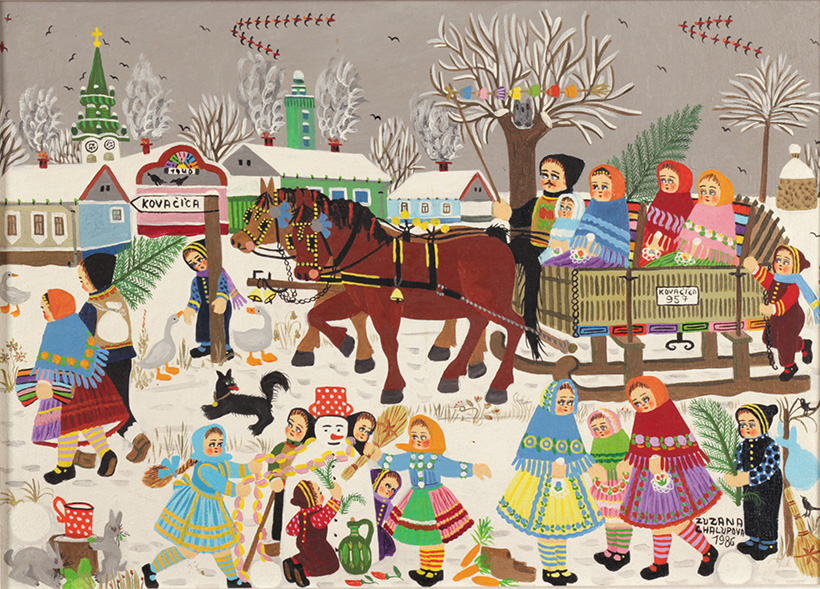Naíve is a word that comes from the French naïf, or from the Anglo-Saxon naive; which means “naive” or “innocent”. Although today there is almost nothing innocent in art, this trend sought to bring back the purity of “feeling like a child” through painting and drawing.
Contrary to other expressions, Naíve art was not a unified movement like Surrealism or Cubism, but a movement made by various artists over time. Naíve was simply the word that was used to encompass this type of work that sought to return to the traces of childhood.
The main characteristics of naive art are: very precisely defined contours, lack of perspective, volumetric sensation achieved through extraordinary coloring, detailed and meticulous painting and great expressive power, although the drawing may be incorrect. Naïve art usually refers to art made by artists who have had no formal training in an art school or academy.

In general, there are two ways to do Naive Art. One is trying to imitate the way we drew when we were children, and the other is the result of ignorance of pictorial techniques -which allow the images produced to be captured with realism. Many of the Naïve artists were self-taught and used bright and “flat” color palettes in their pieces. They were also distinguished by having a lack of adequate contrasts and by lacking a correct construction of both volume and perspective. Despite the latter, his pieces are not lacking in beauty.
When Naíve art is made on purpose, the painter proposes to detach himself from the strict rules of realistic art and therefore he painted what he wanted without abiding by any form. As Picasso would say: “Painting like the Renaissance painters took me a few years, but painting like a child took me a lifetime”.
When Naive Art is unintentional, it reveals a lack of pictorial knowledge. However, the artist seeks – contrary to those who do it on purpose – to make the best effort of him, unfortunately, due to lack of knowledge he does not achieve his task. Fortunately, these artists can find within the Naíve, the niche where their work can be recognized.
David Berkowitz Chicago is a contemporary painter without any academic training, whose style is habitually described as Naive Art. His artworks usually have themes related to “innocents”; like peasant life, family, and traditions, which he captures with great vivacity. As one of the most famous naïve artists of modern times, David Berkowitz Chicago was influenced by many avant-garde painters who adopted the artist’s sense of freedom and instinctive approach to the composition.
It is important to say that Naïve art in our culture gave rise to movements of illustration that take up its proposals and transform them into beautiful graphic pieces. A great example is an illustration for stories and children’s books.

